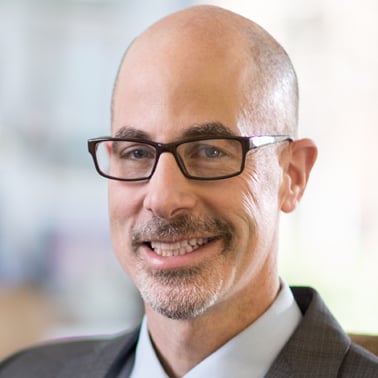Health Care Wasn’t Safe For Patients or Caregivers Before COVID-19
For years before COVID-19, our industry accounted for the largest number of injuries and illnesses related to work of any in the United States. The scale of COVID harm to our teams as well as our patients has been greater because of our pre-existing weaknesses when it comes to safety and improvement.
Now, in this extraordinary moment, the forces and inspiration for change have been unleashed. Clinicians and other healthcare workers on the front lines have demanded their safety and responded urgently and cooperatively to figure out what works for patients, and how to keep themselves safe. They have blown past awkward and unclear top-down edicts and institutional boundaries to share and seek learnings. They have shown that what really matters is what happens at the point of care, between human beings. Leaders with humility and strength can seize this moment to help shape much better futures for their institutions in a post-COVID world.
As the immediate threat of the first wave recedes in a community, leaders can help their organizations leap ahead if cultural healing is fed by a new determination and discipline toward the habits of excellence, anchored by safety. The tag I’ve been using on social media posts during this time - “Leadership for COVID-19, Leadership Past COVID-19” – tries to capture this sense. Of course, there are not bright demarcations to a post-COVID period. Change starts now.
Here are just a few learnings I see to start the conversation. I offer them humbly as leaders and frontline workers alike face life-and-death risk and decisions every day during the present crisis.
Safety Matters the Most. Start There.
When people don’t feel safe, they can’t do their best work. Not even close. Literally every American now understands this truth in their bones. Conversely, when people in healthcare workplaces feel safe, they will give all they can. Workers who know that their leaders are demonstrably committed to their safety and their patients’ safety, as a precondition of any other work, and not a tradeoff with other goals, are empowered to perform at their highest level.
For these reasons, safety has always been an ideal focus for leaders in a complex high-risk industry to dig in deep and focus on at the deepest levels with every individual who works for them. It can be the anchor of high performance. But only if leaders model the way in making safety an unarguable goal, and demonstrate it every day. The number of healthcare leaders who led that way when it comes to workplace safety pre-COVID, sadly, could be counted on one hand.
Coming out of COVID-19, what deeply reflective conversations can leaders and their entire workforces go through to generate an actionable mutual commitment to ensure that we will all work together every day to drive harm to zero? What vulnerability can leaders show, admitting that we weren’t ready to protect our teams, and that we will learn how to do better alongside them, every day? This conversation must happen, action must be taken, even when we feel less globally threatened, because otherwise, harm will still occur every day. A pact anchored in the deepest human aspiration to be safe, and to create safety for others – is the bedrock for powerful relationships and powerful performance.
Transparency and Rapid Learning Cycles. Make Them Real.
Since the seminal 1999 Institute of Medicine Report, To Err is Human, there has been an explosion of rhetoric about the need to report and share transparently information about injuries to patients and workers, their causes and solutions, so others don’t have to fall prey to the same injuries for the same causes. There has been an explosion of duplicative data collection and data collection organizations with the word “safety” in their names. But there has been precious little effective learning, little information getting to or used by front line caregivers, even from within their own organizations. We haven’t led from purpose on safety, and we let bureaucracy, in our own organizations and outside, take over. The loop isn’t being closed, so there is little learning, and still less improvement.
Now, in this COVID moment, front line caregivers, desperate to discover things that might help their patients and especially to keep themselves safe, are sharing and seeking lessons learned “in real time” from others doing the same work, across their own organizations, across artificial institutional borders, even across national borders. My doctor colleagues have learned a lot from physicians in their fields from across the globe. They are pushing the stories forward into rapid experiments that will build in rigor as time goes on.
The New York Times recently captured learning that emerged in near real time, about repositioning COVID patients and delaying ventilation. To drive these learning cycles from people actually doing the work, they have in many cases blown right past top-down directives from institutional leaders that were not based on data, or learning-based.
In doing so, they are echoing other moments where the principles of high-performing organizations have burst forward in memorable lessons accessible to the general public. When the American top-down and wrongly chosen battle strategy to fight the Iraqi insurgency in the early 2000s wasn’t working, the field lieutenants took matters into their own hands. They created a real-time learning network, where every patrol was structured as a learning opportunity, and reports were filed immediately and transparently for all the troops on the ground to learn. Soon enough, the lieutenant network’s lessons and the strategies that emerged became the strategy for the conflict, with rapid learning a core component.
Transparency and real-time learning about harm that is contributed to and learned from by everyone, every day, is an anchor system not only for making safety as a precondition possible, but feeding the culture of commitment and excellence that drives belief and high performance.
How can healthcare leaders reflect on COVID with their teams and decide to fundamentally strengthen how they share and learn from safety incidents, everyone, every day?
Will We Reinforce The Hero Complex, or Commit to Habitual Excellence?
One characteristic that has always gotten in the way of creating true excellence in safety in healthcare is the concept of heroism. Americans are happy to hold front line caregivers up as heroes, because they often are, as we are seeing every day during the COVID-19 crisis. The trouble inside our institutions is that the hero mindset in individuals can lead to willing self-sacrifice that can excuse conditions that unnecessarily place the caregiver in harm’s way, like lack of PPE, or lack of a way to get help when a healthcare worker confronts an unsafe condition. (Sadly and incredibly, many healthcare workers even face gag orders preventing them from discussing their COVID-related safety concerns with patients or the public). It can also lead to a love of “workaround” instead of problem solving, and a “cowboy” mentality where critical habits for excellence, like working in disciplined experimentation in teams, are ignored. The bottom line is the hero complex can let leaders off the hook for excellence, and, in normal times, healthcare workers, too.
What conversation can leaders have with their teams coming out of COVID that celebrates their true heroism, but then turns the power of that heroism to even deeper habits of excellence, driven by the caregivers themselves, not top-down edicts? The extraordinary teamwork we are seeing every day on the news gives plenty of platform. They know they can be excellent under even the worst circumstances. Seize it for better circumstances as well.
A Final Thought
Toyota’s revolution and the modern operational excellence movement were launched coming out of a devastating recession after World War II, when the company’s future was on the line. A pact between leaders and staff resulted in what was equal parts cultural – who do we want to be together – and operational -- a commitment to be excellent by a disciplined approach followed by everyone, every day. Alcoa’s turnaround in 1987 came when a new leader made a similar pact with every worker in the entire organization. By making safety a precondition of all other work, and everyone working every day in visible disciplined ways to make safety a precondition, we can not only survive as a company but become the best in the world at everything we do … a model of habitual excellence.
We lost that Alcoa leader on April 18, 2020. Paul O’Neill was Value Capture’s non-executive chairman and constant source of inspiration and guidance. But as he would be the first to remind, the leadership compact he forged, and Toyota’s, remains open to all of us.
Who are the healthcare leaders who will connect with their teams to create their own equivalent revolution coming out of this crisis? I hope it is you.
Related Post:
Hear Ken read this post in our podcast series, Habitual Excellence.


Submit a comment